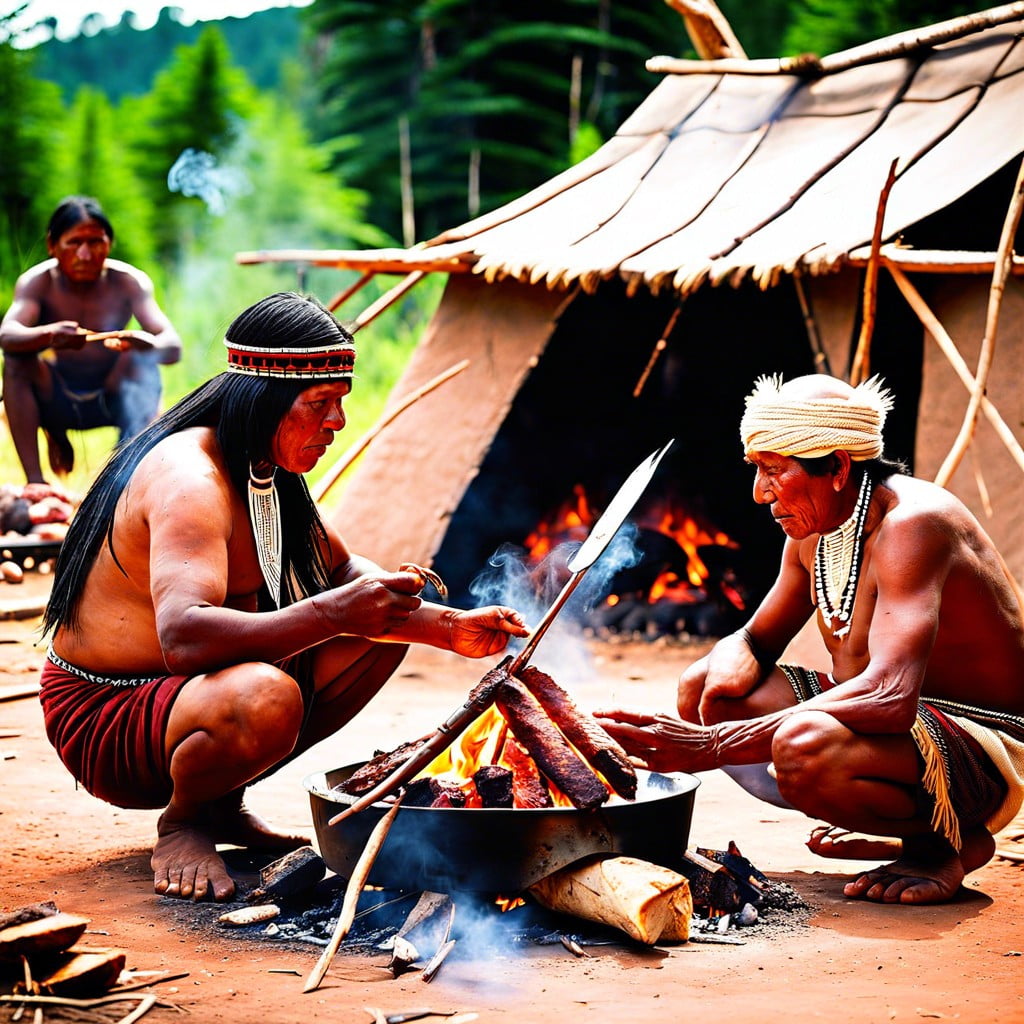Discover the multicultural origins of BBQ and how it evolved into the culinary art form celebrated today.
Key takeaways:
- BBQ has multicultural origins, starting with the Taíno people.
- The term “barbecue” originated from the word “barbacoa.”
- The modern BBQ grill was invented in the 1950s by George Stephen.
- BBQ made its way to America through European colonization and the Atlantic slave trade.
- The first recorded BBQ restaurant was Henry Perry’s in Kansas City, Missouri.
The Origin of ‘Barbecue’

The term ‘barbecue’ has its roots in the word “barbacoa,” a method of cooking meat that originated with the Taíno people of the Caribbean. Unlike today’s quick grilling methods, barbacoa was a slow process involving the smoking of meat over an indirect flame. European colonists adopted these indigenous techniques, incorporating and adapting them into their culinary practices.
The Spanish were primarily responsible for its spread to other cultures as they encountered this new way of cooking and brought their interpretations to the other regions they colonized. This slow cooking technique, now foundational to modern BBQ, emphasizes patience and results in tender, flavorful meat—a far cry from fast-food grilling.
Where Does the Word Barbecue Come From?
The term ‘barbecue’ has its roots in the word ‘barbacoa’ from the Taíno people of the Caribbean and the Timucua of Florida, which originally referred to a wooden framework used to cook meat over an open fire. Spanish explorers adopted the term, and it eventually found its way into English lexicon, retaining the concept of cooking over a heat source but morphing in technique and meaning over time.
This metamorphosis parallels the culinary journey of barbecue itself, which has evolved into various methods ranging from slow-cooking over indirect heat to grilling over a direct flame.
The Invention of the BBQ Grill
The transformation from open-fire cooking to the modern BBQ grill is a significant leap in culinary evolution. Initially, indigenous peoples used a framework of sticks to slow-cook meat over a flame. This method entered Western consciousness through Spanish explorers in the Caribbean. The cooking technique spread, and its rudimentary form gradually became more sophisticated.
The first semblance of a contemporary grill emerged in the 1950s with the invention of the kettle grill by George Stephen. His design, a hemispherical shape with a lid, changed public perception of grilling from a basic campfire method to a backyard staple. Subsequent iterations introduced propane as a clean-burning alternative to charcoal, offering more convenience and control.
Today, innovation continues with grills featuring advanced technologies such as precision temperature controls and smart integration, reflecting an ongoing pursuit of the perfect BBQ experience.
How Did BBQ Make It to America?
BBQ’s journey to America is inextricably linked to European colonization and the Atlantic slave trade. The Spanish, upon arriving in the Caribbean, adopted the indigenous Taino people’s barbacoa technique, which involved slow-cooking meat over an indirect flame. As European colonists expanded into the American South, they mixed these techniques with their own culinary traditions.
African slaves also had a significant impact, bringing intricate seasoning and marinating customs, further evolving the art of barbecue. Their expertise in cooking tougher cuts of meat at low temperatures for long periods made for succulent, flavorful dishes that became a staple in Southern cuisine.
Availability of pigs in the Southern United States, due to Spanish introduction and their suitability to the environment, made pork the meat of choice for barbecue. The practice of pit cooking, where meat is cooked over a pit of coals, became prevalent during large gatherings and celebrations, setting the foundations of communal American BBQ traditions.
Meanwhile, cattle ranching in Texas gave rise to a distinct BBQ culture centered around beef, showcasing the regional diversification of American barbecue based on available resources.
This melting pot of traditions and influences culminated in a uniquely American BBQ culture that continues to evolve with each generation.
What Was the First BBQ Restaurant?
Identifying the original barbecue restaurant is a complex task due to the nature of barbecue’s grassroots development. However, one of the earliest recorded establishments is the venerable Henry Perry’s stand in Kansas City, Missouri, dating back to 1908.
Known as the “father of Kansas City barbecue,” Perry served slow-cooked ribs wrapped in newspaper to workers in the Garment District. This pioneering eatery set a template for the evolution of American barbecue restaurants, balancing the simplicity of open-pit cooking with a model that could cater to the growing urban appetite for this distinctly American cuisine.
Over time, the barbecue restaurant concept spread, shaping regional flavors and styles, each claiming its own unique heritage and method.

